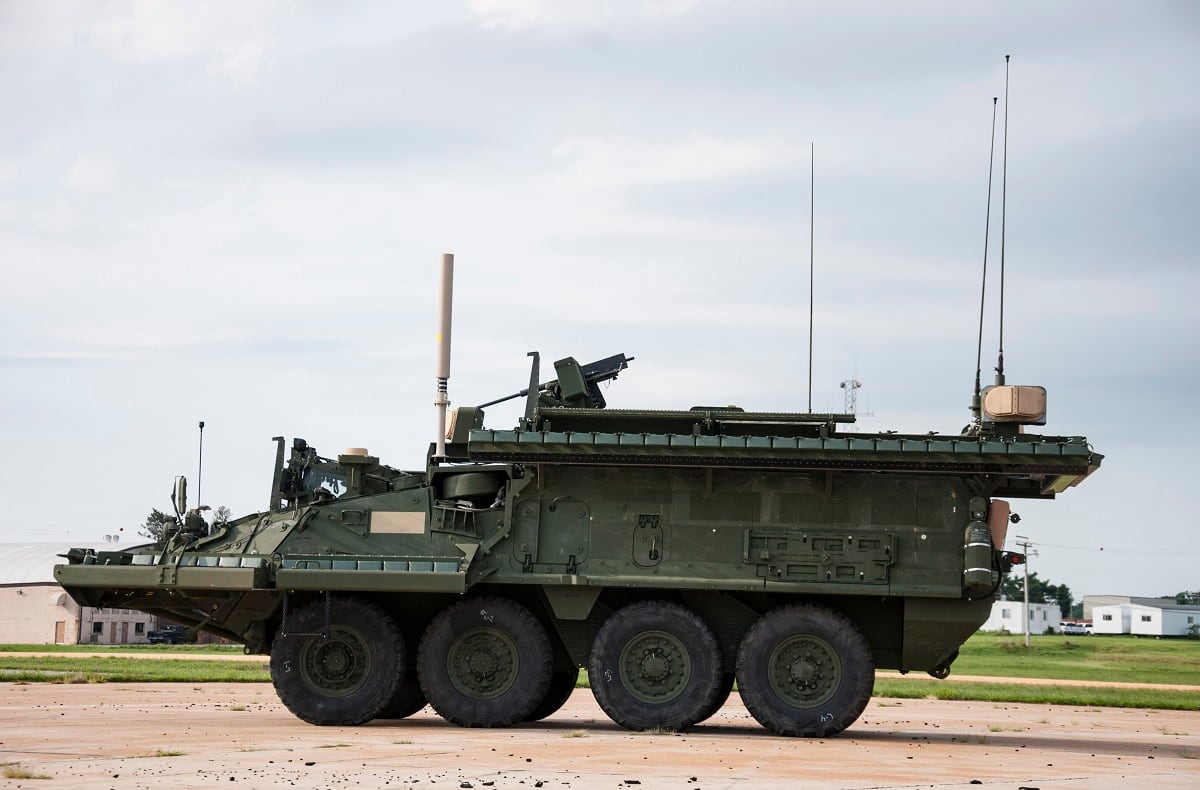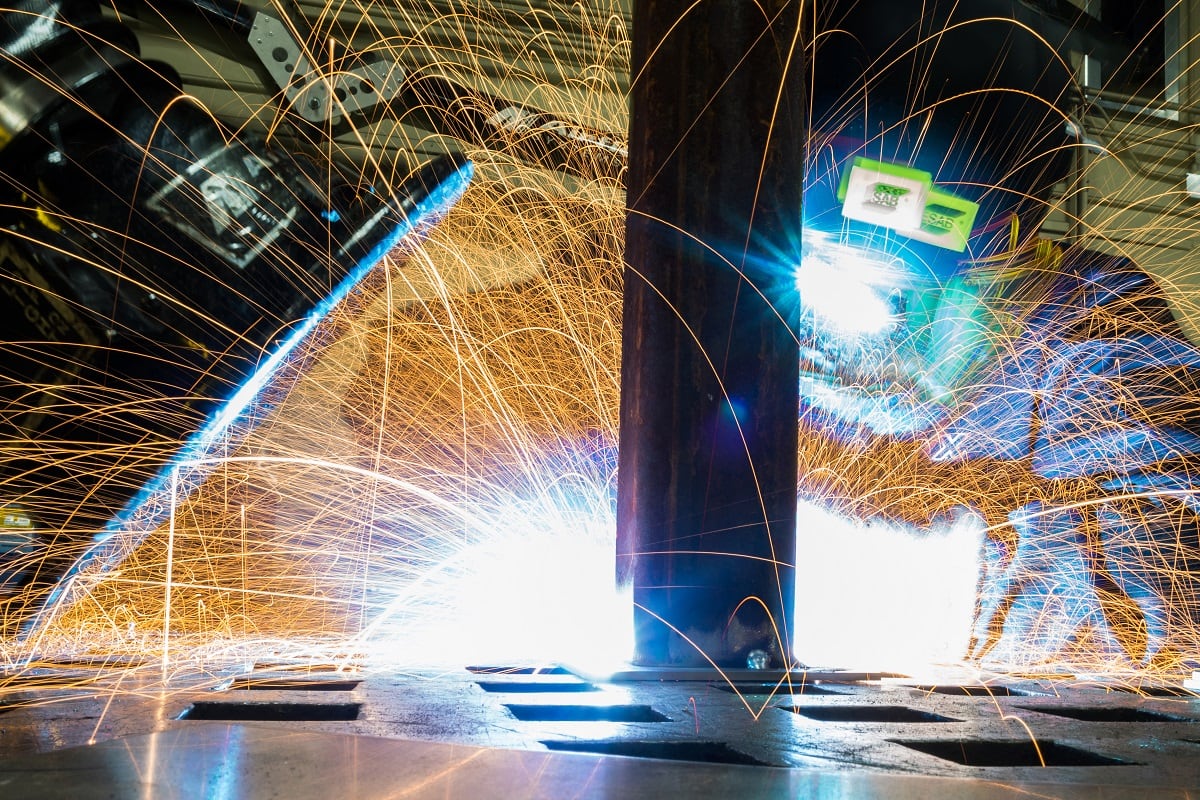WASHINGTON — Looking ahead to a bitter 2020 presidential contest, President Donald Trump used a U.S. Army tank plant that’s benefiting from increased defense spending to tout the country’s economic gains under his administration.
Trump on Wednesday toured and delivered remarks at the Joint Systems Manufacturing Center in Lima, Ohio, the nation’s last remaining tank manufacturing facility. Earlier this year, the Pentagon announced a $714 million award to General Dynamics to upgrade M1A1 Abrams tanks at the plant, which the White House says is leading to the hiring of hundreds of new workers.
After completing the tour, Trump told cheering workers: “Well, you better love me. I kept this place open.”
The Lima plant has added more than 150 workers since the last year of the Obama administration, with plans to hire 400 more over the next year and a half, according to the White House. The plant will directly employ more than 1,000 employees and support many more across the supply chain.
The president, who’s been markedly vocal about protecting America’s defense industrial base and the jobs it creates, took that message to blue-collar Ohio, traditionally a swing state, which Trump won in the 2016 election by a margin of 8 points. Trump planned to hold a fundraiser later in the day in Canton, Ohio, as he steps up his re-election efforts.
Though Trump took credit for keeping the Lima plant open, Congress increased funding for the Abrams and other military vehicles steadily since 2015. After years focused on counterinsurgency warfare in Iraq and Afghanistan, the need for heavy armor in Europe resurfaced in U.S. Army talking points after Russia invaded Crimea in 2014 and as the United States sends rotational armored brigade combat teams into Europe to deter further Russian aggression.
Trump did not take the opportunity to make any points about Russian aggression or the deterrent effect of American heavy armor in Europe.
“Four straight years, the number budgeted for tank upgrades was zero,” Trump said. “That was under your great President Obama. Our military readiness declined and your workforce was slashed by 60 percent. But those days are over. We are rebuilding the American military, we are restoring American manufacturing and we are once again fighting for our great American workers.”
The wide-ranging speech included a detour to repeat his attacks against the late Sen. John McCain, nearly seven months after the Arizona Republican’s death from brain cancer, over McCain’s support of the U.S. wars in the Mideast, his vote against repealing the Obama-era healthcare law and his handling of a dossier linking Trump to the Russian government.
RELATED

“I gave him the kind of funeral that he wanted, which as president I had to approve. I don’t care about this, I didn’t get a thank you. That’s OK,” Trump said before turning back to the topic of tanks.
Beyond the Abrams, Trump name-checked other military platforms and the locations where they’re built, touting his proposed FY20 national defense budget of $750 billion: “From the awe-inspiring F-35 fighter in Texas to the Ford-class aircraft carrier in Virginia ... to advanced missile defense systems in Alabama, American workers are building the most cutting-edge modern military anywhere on the planet.”
The remarks came even as key Democrats in Congress say Trump’s defense budget request is $20 billion too high to net a congressional deal to ease budget caps. The chairman of the House Armed Services Subcommittee on Strategic Forces said he expects statutory budget caps to be eased to accommodate $733 billion on the defense side of the federal budget.
“I think Congress is getting the message on this and I think this year will have a pretty much assured $733 billion defense budget,” Rep. Jim Cooper, D-Tenn., told a Washington, D.C., audience Wednesday.
Where others have been timid, the Trump administration has been boldly unapologetic in hawking the economic benefits of robust military spending. On Tuesday, Peter Navarro, an assistant to the president and the director of the Office of Trade and Manufacturing Policy, posted an opinion piece in The New York Times touting the military budget’s value in “both defending our homeland and revitalizing our manufacturing base.”
RELATED

“In terms of economic security, the Trump defense budget is helping to create good manufacturing jobs at good wages, including in communities like Lima that have fallen behind economically,” Navarro said. “In Ohio alone, 198 of [Lima’s] suppliers are spread out across the state’s 16 congressional districts. These mostly small and medium-size businesses churn out components ranging from bearings, castings and industrial packaging to electronic assemblies, pressure gauges and steel.
Though the Army is in the process shaking up its modernization programs, it has valued combat vehicles and lethality, leaving Abrams upgrades a priority. The Pentagon’s new round of Abrams upgrades include the Rafael-made Trophy Active Protection System to guard against anti-tank missiles.
Historically, the Abrams has not only been tough to kill on the battlefield but — for the same reasons Trump was in Ohio Wednesday — tough to kill in Congress.
The first M-1 Abrams Tank entered service with the Army in 1980 and saw its first combat during Operation Desert Storm in 1991, where it was maneuverable, as well as accurate, deadly and protected from Iraqi T-72s, according to a Congressional Research Service report.
By the early 2010’s, despite plans to upgrade the Abrams, years of counterinsurgency warfare, force structure cuts and lack of foreign military sales opportunities all left Congress concerned with the long-term military effectiveness of the Abrams and other armored vehicles, as well as the health of the armored-vehicles industrial base.
In 2012, the Obama administration sought to save $3 billion by freezing refurbishment of the M1 from 2014 to 2017, so it could redesign the vehicle. The proposal ran aground on Capitol Hill, however, in part because it would have idled the Lima plant and, likely, because recapitalizing the M1 then required suppliers in 41 states.
Then-Army Chief of Staff Gen. Raymond Odierno told Congress that the U.S. had more than enough tanks to meet the country’s needs, but lawmakers like Sen. Sherrod Brown, D-Ohio, said the program is not only “vital to our country’s national security and military readiness, but is critically important to the economy of Lima and Allen County.”
More than 170 House members—Democrats and Republicans—sent a letter to then-Defense Secretary Leon Panetta, urging him to continue supporting their decision to produce more tanks.
By early 2015, Obama reversed course and his proposed budget included more than $445 million to accelerate a major upgrade to the Abrams and to sustain the Lima facility.
According to Mark Cancian, a retired Marine Corps colonel who is now a senior adviser with the Center for Strategic and International Studies, the Obama administration downplayed tank production because it was rebalancing to the Pacific and China, where tanks are less useful, and Russia did not then seem to be a major threat.
“The strategic situation has changed,” Cancian said. “Russia, with its powerful ground forces, is threatening NATO, especially the Baltic states. The U.S. therefore needs to rebuild its ground capabilities. The Army has plans to replace the Bradley [Fighting Vehicle], but nothing yet for the Abrams. Therefore, it needs to upgrade the existing Abrams.”
RELATED

In his column for Forbes this week, Loren Thompson, a paid consultant for General Dynamics, lauded Trump’s open acknowledgement of the economic and industrial implications of weapons purchases, but also pointed to heavy armor’s new relevance.
“Having said that, the main driver behind work currently being performed at the tank plant is the rising threat from ‘near-peer’ adversaries, meaning Russia and China,” Thompson wrote, adding that planned upgrades to the Abrams are designed to keep it “the most lethal and survivable armored vehicle in the world through mid-century.”
In January, General Dynamics announced the $714 million order for upgrades to 174 M1A1s to its System Enhancement Package Version 3 configuration. The delivery order, company officials said, would keep the Abrams production line rolling at a steady rate through 2021.
Aaron Mehta, Jen Judson and The Associated Press contributed to this report.
Joe Gould was the senior Pentagon reporter for Defense News, covering the intersection of national security policy, politics and the defense industry. He had previously served as Congress reporter.








